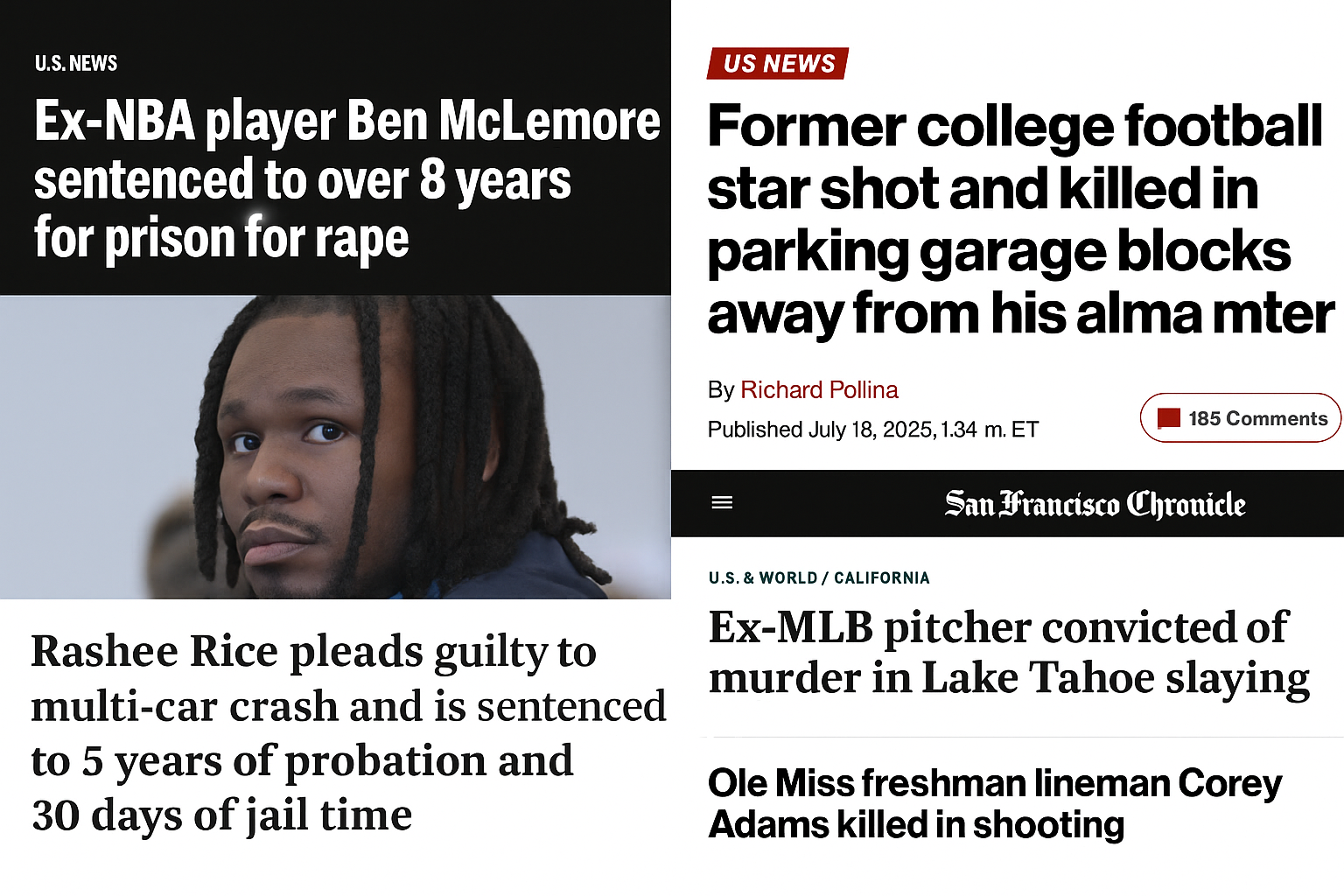If This Were Film, We’d Fix It
A lot of people might look at this mashup and say I’m “ambulance chasing” or cherry-picking headlines to prove a point. While I understand that assumption, I push back—hard.
The headlines above are all from just the last three weeks in U.S. sports news. I didn’t have to dig. I just searched “male athletes + violence + perpetration and/or victimization.” That was enough to surface five major incidents. You—or your players—probably saw them on an ESPN feed or while scrolling X. Maybe you clicked if the player or team meant something to you. But here’s the point: we’re numb to it.
We almost expect this.
If I stripped the names and just posted in bold:
RAPE.
HIT & RUN.
MURDER.
MURDERED.
ASSASSINATED.
Would that make anyone pause longer? I doubt it.
I do now. Because once you know, you can’t unknow. And what I now KNOW is this:
Men and violence are too often linked.
Male athletes are too often involved in, or victims of, violence off the court or field.
And we tend to label them “bad apples,” shake our heads, and move on.
That would never fly in practice. If you were breaking down film and saw two of your 13 defensive backs with bad footwork, would you say, “Well, most of them got it right. Good enough”?
Of course not.
You’d tag it, show it, teach it, and build a fix into the next session.
So why don’t we coach conduct with the same urgency?
I won’t launch into a full-on soliloquy here—blogs are short—but here’s the bottom line:
If you’ve embedded TeamsOfMen curriculum and sessions into your season, at the very least you can credibly say: “We tried to address this. We attempted to build people.”
Because sweating through a scrimmage doesn’t equal character development.
If you’re reading this and thinking, “What could TeamsOfMen possibly do to prevent this stuff?”
That’s the first question in a series we walk coaches through—
And it ends with you wearing our gear, reading our books, and running 10–12 minute sessions with your guys that change everything.
Keep going.


